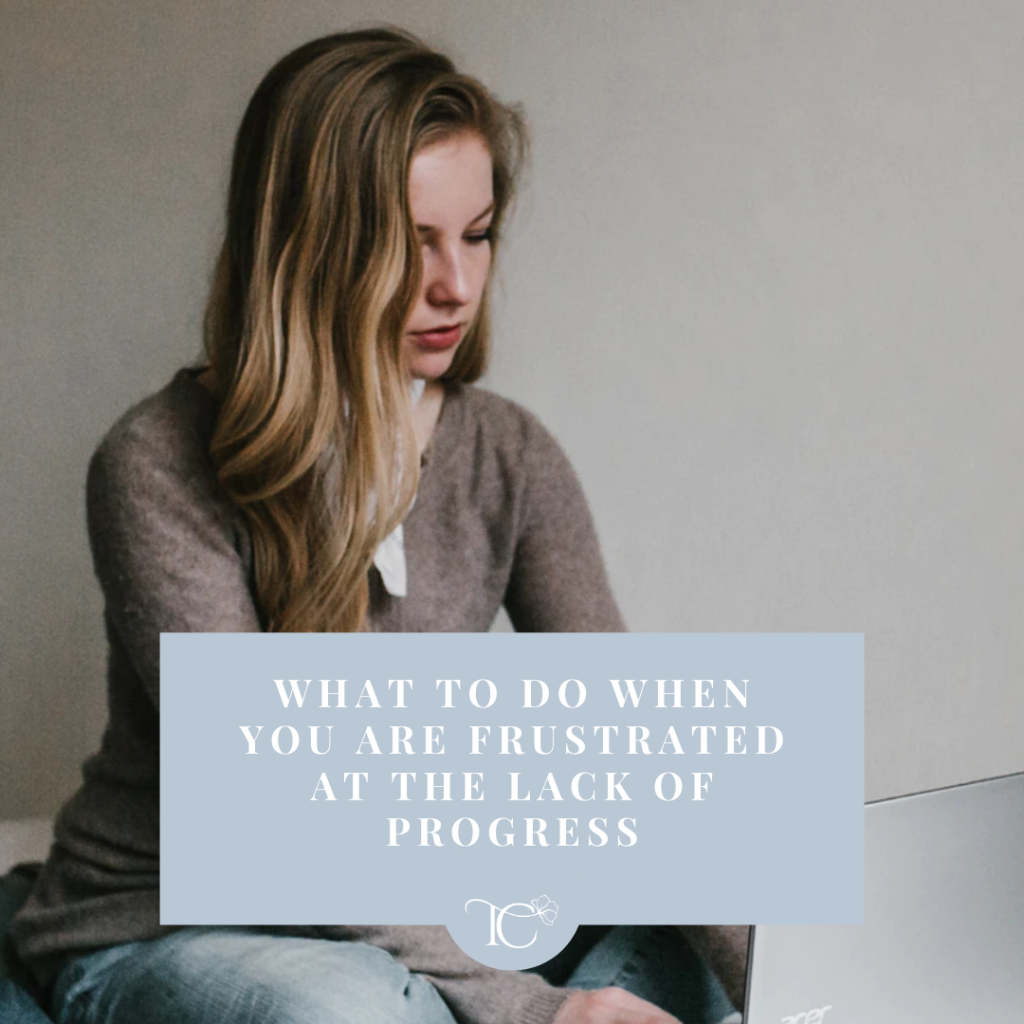Over my career I’ve frequently felt frustrated. Early on in my career I felt perpetually impatient. Impatient at the lack of progress in my career. Impatient at how little I achieved over a month. Even impatient at how long it was taking me to complete something right now. I would also feel impatient towards others around me. Typically it wasn’t about someone’s progress/work contribution (though occasionally it was), instead, the frustration tended to be focused around impatience at not involving me in something or recognising that I needed to be at the table. Sound familiar?
All too often feeling frustrated results in a deepening sense of frustration leading all the way to anger. You might be losing sleep or your temper with colleagues (even if you don’t let it show).
When we get frustrated and annoyed it results in not being the high vibe person that you should always be nurturing. Frustration BURNS your valuable energy, creativity and insight. It turns off empathy. So it can easily descend into a frustration downward spiral where you get more and more frustrated.
Frustration leads to anger, which leads to loss of productivity, reduced respect for those around you (and of those around you for you). Eventually, we end up in a downward frustration/annoyance/anger/productivity drop spiral.
If this feels true, I want you to know it doesn’t have to be this way. On some level, even though you probably don’t feel like it, you are choosing to get frustrated.
‘Wait hold on… I can just turn it off? No way!’ might be what pops into your head. Maybe this blog post has become a source of frustration for you, because we don’t just have a frustration off-switch, right? So yes, switching it off, or better yet, channelling the SOURCE of your frustration to good, isn’t easy.
But it can be done.
The three steps to addressing feelings of frustration
If you are ready to let go of frustration but just frustrated about the lack of ability to do it. Here are the three steps you need to take. But note that this isn’t a once-and-done process. You’ll need to repeat it and create an upward feedback loop as you begin to understand and then channel your frustrations to a positive cycle.
Step 1: Understanding the source of your frustration
The first step, always, is to understand. This applies to pretty much anything. Life has told us how to teach ourselves things, how to google an answer. But our education system doesn’t discuss understanding ourselves as individuals.
To really address any emotional blocker (and frustration is one of many) you need to really understand where it is coming from.
The surface symptom is a good one to start with: WHAT/WHO are you immediately frustrated by. Take a piece of paper and write it down. Keep it private so you know you can be 100% open and honest with yourself.
And let’s not be judgemental about our own brains here – if you are frustrated by your family or a loved one (most of us are at some point) – that is OK! Don’t feel bad about it, that just buries the frustration and doesn’t address it, creating more reasons to re-enter that downward frustration spiral. Be absolutely honest with yourself even if you can’t be that honest with those around you. Similarly, frustrations with colleagues who are really doing their best right now might feel uncomfortable because you know the current situation isn’t their fault or is out of their control. But if you don’t acknowledge to yourself that you are frustrated you can’t process it.
Some common frustrations include:
- Family: partner/children not contributing to caring responsibilities/housework etc.
- Co-workers: someone underdelivering in some way, or not acknowledging your contributions to you/your colleagues. Not enough thank-yous is a common source of frustration!
- Boss/Skip boss/Skip-skip…(etc.) boss: Not getting recognised, not realising how much you are already doing, not listening, piling on the pressure, not bringing you into a conversation early enough for you to avoid a situation, not involving you in discussions that you should be in, not recognising the need to promote you/bring you to the table (the list is actually almost endless here).
Write all the frustrations down. Let it come from your heart with no judgement – you can destroy the evidence later  .
.
Step 2: Get to the underlying issue
All too often that list of frustrations you have just written down are not the real issue going on. They are surface irritations. Consider health and disease as an analogy. When we treat a physical symptom, such as treating the symptom of itchy eyes with eye-drops, we aren’t fixing the underlying issue. If your eyes are itchy because of hayfever you need to address the cause of hayfever (i.e. reduce your exposure to pollen or treat your reaction to pollen with antihistamines).
The same is true with our anger and frustration. We see the symptom, but all too often there is an underlying cause. Getting to the underlying issues is difficult and uncomfortable, and is, therefore, easier with someone to bounce ideas off such as a friend (as long as they don’t feature on the list of frustrations) or a coach, but you can start to make progress yourself.
To get to the bottom of what is going on, have a look for patterns in your source of frustrations. Is it one person/one group of people? Is it primarily aligned with your home life or your work life? Is it the result of a change in your work or personal circumstances (hello COVID!)?
This is the hardest step as it takes a level of self-awareness and reflection that is uncomfortable, but getting to the bottom of what is really going on will create a long-lasting change in relationship with your feelings and your frustration response to others. Whereas not understanding what is going on will result in a temporary fix or no fix at all.
Step 3 can be used even if you haven’t got to the bottom of what is going on. But you will make better progress if you get to the bottom of things first by exploring step 2.
Step 3: Channel your new awareness to positive action
Once you get to the bottom of what is really bothering you and acknowledging it to yourself rather than being angry/annoyed/sad and bottling it up, it is time to take action.
You could just go out and change something small to remove the frustration. And certainly, in some situations, this is the only thing you can do.
But the biggest and most life-changing results, providing a sense of contented-ness long-term, come from channelling that frustrated energy into positive action that does two things:
- Fundamentally change your approach to your underlying source of frustration so that it no longer frustrates you.
- Make a significant positive impact on your career/personal life and wellbeing.
For example, if deep down you’ve realised that you feel that you do far more housework or childcare than your partner there are two actions you could channel that frustration into. Firstly, communication! How can you communicate more effectively what needs to be done and what you are doing (and allow them to reciprocate that communication)? Secondly, allow your partner to do things differently from you. Just because you would make the bed this particular way or you would get the children to sleep that particular way, doesn’t mean it is the only way. Allow your annoyed energy to accept that they need to figure it out (without you saying how you would do it differently!).
A similar approach can be taken with colleagues: improve communication with your colleagues and learn to delegate purposefully: let them figure out THEIR way of doing things!
Finally, there is dealing with people you (feel you) have no control over, such as your boss. All too often frustrations aligned with bosses are actually a reflection of
(1) hitting a glass ceiling or
(2) your boss just not recognising your value (which often feels like a glass ceiling).
The reality is that all too frequently you have far more control than you think you might. It may be that your boss is unaware of how much you are contributing, what you would like to be doing (they aren’t mind-readers!) or some of your skillsets. Or it might be that you are continually talking about how swamped you are with work and therefore they don’t include you in discussions with the best of intentions on reducing/minimising your workload. But remember, if you can demonstrate your value and that you want to be included, you can always improve your options.
The cyclical journey of managing frustration
The reality is that you will find that the first time you go through steps 1, 2 and 3 you will improve things, but it won’t magically go away. That is when repeating the process starts to serve you. Frustration comes from within, but so does choosing how we respond.
Each time you repeat the steps above you will find you improve your understanding of yourself, and improve your approach to life. So keep repeating these steps and keep challenging your assumptions. Just learning to step back and challenge yourself on why you are frustrated rather than wallowing in it can be amazingly powerful in boosting our energy, our mood and as a result our relationships (professionally and personally) and our productivity.
Want some help dealing with your frustrations, lack of career progress or how to handle your lack of time and opportunities during COVID-19, then consider coaching!
If you are:
 Excited to embrace the opportunities that being a successful leader in tech gives you!
Excited to embrace the opportunities that being a successful leader in tech gives you!
 Ready to have more time and more freedom to do what lights you up, become a lit-up leader and DO MORE of what is GOOD for your organization, instead of being frustrated by others
Ready to have more time and more freedom to do what lights you up, become a lit-up leader and DO MORE of what is GOOD for your organization, instead of being frustrated by others
 Want someone who can guide you to success
Want someone who can guide you to success
 Ready to take action (even during COVID – because this is the time to thrive!)
Ready to take action (even during COVID – because this is the time to thrive!)
Then it’s looking increasingly likely that a coach might just be for you!
On the other hand:
 If you want to hustle for everything, believing that being a successful leader in tech has to be hard
If you want to hustle for everything, believing that being a successful leader in tech has to be hard
 If you think your dream job won’t pay you the wage you want
If you think your dream job won’t pay you the wage you want
 If you think you can just keep struggling along, doing the same things and that eventually, something will click
If you think you can just keep struggling along, doing the same things and that eventually, something will click
 If you are happy settling for “just enough”
If you are happy settling for “just enough”
Then I might not be the coach for you.
But there’s only one real way to find out…
Hop on a Discovery Call with me.
We can chat about where you are at in your career. We can see if we vibe well.
And if it feels right, I can tell you about how I work with my clients, the kind of results I help them get and specifically how I can help YOU become the lit-up leader you know you want to be.



